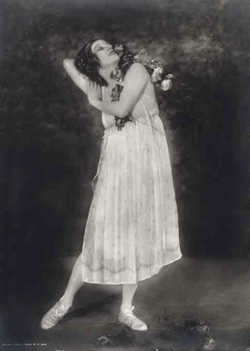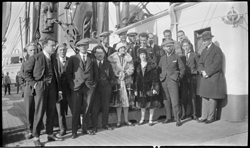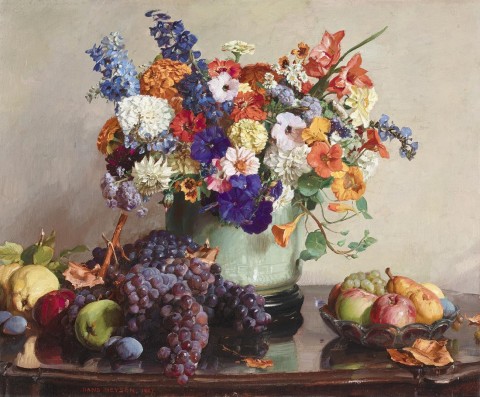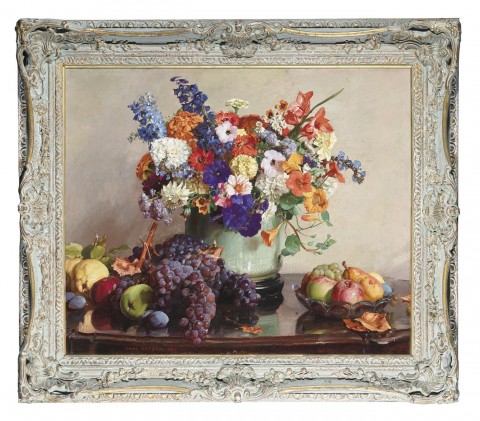AUTUMN FLOWERS AND FRUIT, 1927 (ALSO KNOWN AS ‘SOUVENIR’)
HANS HEYSEN
oil on canvas
68.5 x 81.0 cm
signed, dated and inscribed on backing board verso: “Autumn Flowers and Fruit” / Hans Heysen / Ambleside / 1927 – 1929
inscribed on backing board verso: No 1263 / AUTUMN FLOWERS + FRUIT / HANS HEYSEN
Commissioned by Madame Anna Pavlova, London
The artist, Ambleside, South Australia
Private collection, Sydney
Sir Reginald Marcus Clarke KBE, Sydney
Savill Galleries, Sydney
Private collection, New South Wales, acquired from the above in 1988
A Century of Australian Painting, 1888 –1988, Savill Galleries, Sydney, 21 April – 21 May 1988, cat. 21 (illus. in exhibition catalogue)
Art in Australia, Sydney, Ure Smith, Sydney, 3rd series, vol. 21, September 1927 (illus. frontispiece, as ‘Souvenir’)
McNally, J.M., ‘The Love of Form and Colour’, The Daily Telegraph, Sydney, 30 April 1927, p. 40
‘Books in Brief’, The West Australian, Perth, 15 October 1927, p. 7 (as ‘Souvenir’)
‘The Library Table’, The Register, Adelaide, 22 October 1927, p. 6 (as ‘Souvenir’)
Zinnias and Autumn Fruit, 1923, oil on canvas, 60.0 x 71.0 cm, in the collection of the Hans Heysen Foundation, Hahndorf, South Australia, illus. in Thiele, C., Heysen of Hahndorf, Ridby Ltd., Adelaide, 1968, p. 97 (as ‘Autumn Flowers and Fruit’)
2..jpg

When Hans Heysen painted this grand affair of flowers and fruits for Anna Pavlova, he titled it ‘Souvenir’, no doubt in recollection of the prima donna’s visit to his home. Pavlova, then hailed as the world’s greatest dancer, first brought her dance company to Australia in 1926, performing to full houses of captivated audiences. In Adelaide, she appeared at the Theatre Royal in late June and late July into August. It would have been during this time Pavlova visited the Heysen home, The Cedars, near Ambleside, (today’s Hahndorf in the Adelaide Hills). Here she was so enraptured by the painting Zinnias and Autumn Fruits, 1923 that ‘she wrote out a blank cheque and told the painter to name his price’.1 As Heysen had given it to his wife as a birthday present, he declined, offering to paint another, like work. (Heysen placed a strong attachment on his flower paintings, choosing them as special gifts. Still Life with Heath, 1918, for example, was a gift to his parents for their Golden Wedding Anniversary).2 The result was Souvenir, 1927 despatched to Pavlova in London the following year. Described today by Allan Campbell, Collections Curator at The Cedars as ‘one of his finest still-life paintings’, the forthright Pavlova ‘sent it back and said no, she’d wait until he relented’.3 The painting that so caught Pavlova’s eye, still hangs in The Cedars to this day.4 While to Pavlova her first love was irreplaceable, Souvenir was applauded. Earlier previewed through its colour illustration in the September 1927 issue of Art In Australia, where one writer described it as ‘a brilliant study of still-life’, another enthused:
'This is a brilliant thing – a riot of colour in orange, scarlet, purple, and blue of nasturtiums, zinnias, petunias, delphiniums, and other flowers, while beneath is a mass of rich toned fruit, the grapes wonderfully given, and through the whole shimmering piece of daring colour there runs an impression of the character of Pavlova herself.'5
While M. J. MacNally described it as ‘magnificent’, he added a further insight into Heysen:
'This tribute to the genius of the beautiful Russian is by no means the first Heysen has made. Some time ago, after attending a recital by a famous violinist, he dashed home to Ambleside, painted a water-color of the bush, letting loose in it the emotion he felt at the artistry of the visitor. It was a proud and delighted musician who received the precious gift.'6
1..jpg

Pavlova and Heysen shared a deep love of natural beauty. Autumn Leaves, set to music by Chopin and choreographed by herself was one of the pieces frequently in her repertoire. She also collected plants from Australia for her London greenhouse. One can only imagine the engagement between artist and dancer during her visit to The Cedars, Heysen biographer Colin Thiele, remarking ‘her vitality shaking the quiet seclusion of the place’.7 The theatrical flair and colour fullness of Souvenir, reflects the Baroque splendour, which Pavlova would have admired in her longed for Zinnias and Autumn Fruits, 1923. It also characterises other grand still life paintings of the twenties, especially his Flowers and Fruit, 1926, (in the collection of the National Gallery of Australia, Canberra) and Autumn Fruits, 1928 (Art Gallery of South Australia, Adelaide). Each has an opulence and grandeur one might associate with the heroic moments of opera. Pavlova’s loss of Souvenir was certainly Sir Reginald Marcus Clarke’s gain, his collection of Australian and European pictures once being among the finest in the land.8
1. Allan Campbell, Collections Curator, The Cedars, quoted in Stephens, A., ‘The other Heysen’, The Age, Spectrum, Melbourne, 2 March 2019, p. 8
2. North, I., Hans Heysen Centenary Retrospective 1877-1977, Art Gallery of South Australia, Adelaide, 1977, p. 45
3. Campbell, op. cit.
4. Thiele, C., Heysen of Hahndorf, David Heysen Productions, 2001, p. 97 as Autumn Flowers and Fruit, 1923, colour illus.
5. ‘Books in Brief’, The West Australian, Perth, 15 October 1927, p. 7; and ‘The Library Table. Art in Australia’, The Register, Adelaide, 22 October 1927, p. 6
6. MacNally, M.J., ‘The Love of Form and Color. From Artist To Artist’, The Daily Telegraph, Sydney, 30 April 1927, p. 40
7. Thiele, op. cit., p. 217
8. Exhibition of Oil Paintings and Water Colors from the Collection of Mr. R. M. Clark, Marcus Clark showrooms, Sydney, 6 August 1923, touring to Tasmania in 1926
DAVID THOMAS

